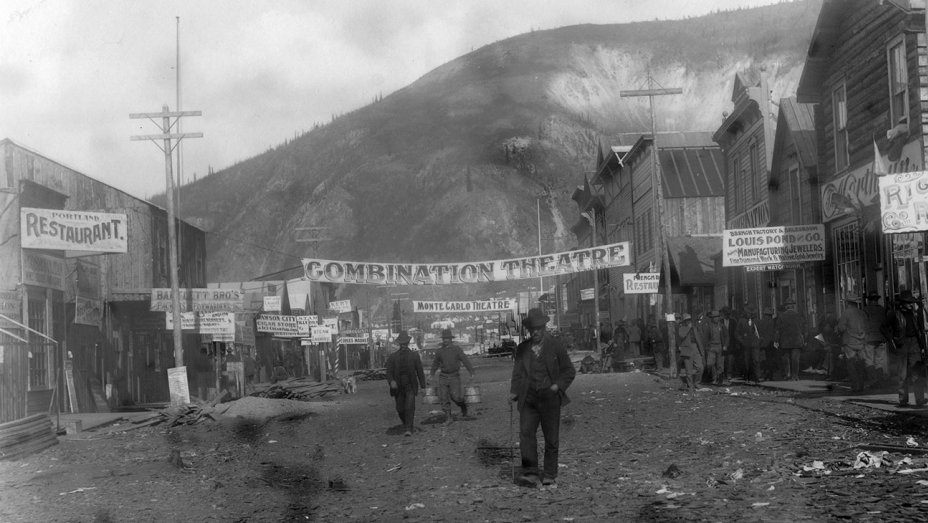 Academic yet accessible, expansive yet intricate in approach, Bill Morrison's Dawson City: Frozen Time is a singular experience, a film which uses rare silent films, dated news reels, archival footage, interviews, and static historical photographs to detail the bizarre true story of a massive film restoration project, where some 500 long forgotten silent films dating from 1910-1920 were discovered buried in a sub-arctic swimming pool deep in the Yukon Territory, in Dawson City, located about 350 miles south of the Arctic Circle. Bill Morrison's documentary is an ode to the transitive properties of cinema, detailing its ability to document and preserve a certain timelessness, with Dawson City: Frozen Time detailing an intricate historical deconstruction of the small town of Dawson City, a beacon of the Yukon which boomed during the gold rush of the late 1890s, only to fall into obscurity when the gold had been excavated. Bill Morrison's film depicts the history of this gold rush town through the lens of this large film collection, a decision which manages to provide an intricate historical narrative while also delivering a stirring evocation on the timeless nature of cinema, detailing how film is intrinsically a part of the history itself. The Klondike Goldrush, which brought hundreds of thousands of prospectors to Dawson City, coincided with the rise of commercial cinema around the world and Dawson City: Frozen Time beautifully showcases the role which this small town played in creating the medium of cinema as we know it today, with names such as Sig Grauman and Alexander Pantages spending time there before making their way to Los Angeles, where they helped create the large-scale projector which could be showcased to the masses, known as movie theaters by everyone today. Dawson City: Frozen Time is a story of exile, birth, death, and ultimately resurrection, with the small town's rise and fall serving as the center piece, with the discovery of the 500 silent films underneath the permafrost of Dawson delivering a symbolic form of salvation to this town. Methodically detailed, Bill Morrison shows how the discovered films are a stunning archaeological find due to their ability to preserve history, with Dawson City: Frozen Time exhibiting the expansive nature of film and documentation and the profound effects and intrinsic relationship it has with history itself. Morrison's film mixes various forms of visual media together in concise and transfixing ways, but overall use of music takes the film to another level, becoming a meditative, tranquil experience as the viewer surveys the history of this small town through the lens of the birth of cinema. While some less adventurous viewers may find Dawson City: Frozen Time too academic for their liking, Bill Morrison's film maintains relatively accessible, with his passion for the history and transitive qualities of cinema shining through in every frame of this film.
0 Comments
Leave a Reply. |
AuthorLove of all things cinema brought me here. Archives
June 2023
|



 RSS Feed
RSS Feed
